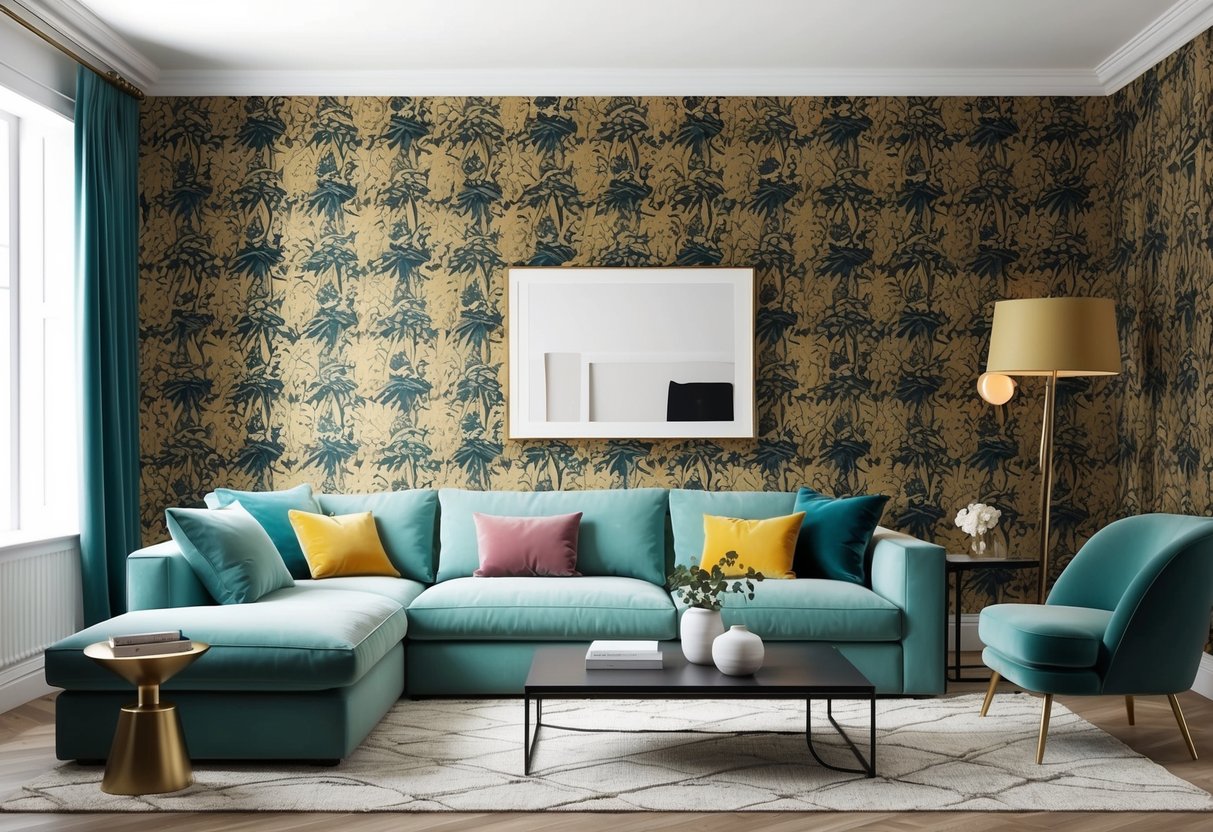
Decorative Use of Mirrors
Mirrors can instantly refresh small living spaces by improving lighting and altering the perception of size. When used thoughtfully in home décor, they offer both visual appeal and a practical effect that benefits every room.
Expanding Space with Mirrors
Mirrors are well known for their ability to make rooms look larger and brighter. By reflecting both natural and artificial light, mirrors create a sense of depth, making tight or dim spaces feel more open and inviting.
In compact interiors, large wall mirrors or groups of smaller mirrors can be especially effective for expanding sightlines and reducing visual clutter. Small apartments and narrow hallways can gain a spacious feel by using mirrors opposite windows or light sources.
Round mirrors add softness, while rectangular or oversized styles give a more dramatic expansion effect. Using mirrors as a focal point above furniture can also add sophistication and increase the perception of space throughout the home.
For more tips on how to create the illusion of extra space, see how mirrors help in expanding small home design.
Optimal Mirror Placement
Where mirrors are placed matters as much as the mirrors themselves. Positioning a mirror directly across from a window allows it to reflect outdoor light, which enhances brightness and brings in more of the outside view.
In dining or living rooms, a mirror can reflect a chandelier, artwork, or feature wall, instantly elevating the style and ambiance of the space. Entryways benefit from mirrors near the door, adding light while letting guests quickly check their appearance.
Carefully angled mirrors in darker corners can reduce shadows and brighten up neglected areas. Avoid placing mirrors where they only reflect blank walls or clutter, as this amplifies problem areas rather than beauty.
Deck The Walls discusses other strategic mirror placements to maximize their effect in any room.
Quick tips for mirror placement in small spaces:
- Place mirrors near or opposite sources of light.
- Avoid overcrowding with multiple mirrors on every wall.
- Use statement mirrors to draw attention to desirable features.
- Keep mirror frames cohesive with room décor for unity.
Color Schemes and Visual Tricks
Small spaces benefit from precise color choices and clever painting techniques. Light neutrals and intentional accent walls can shape the perception of size and depth, transforming how each room feels.
Utilizing Light Neutrals
Light neutral colors such as soft whites, warm beiges, pale grays, and creams are essential for maximizing a room’s perceived space. These shades bounce natural and artificial light, making walls appear to recede and the area feel larger.
Painting both the walls and the ceiling in similar light tones can create a seamless effect, giving the illusion of extended height and openness. Pairing light neutral walls with minimalistic or transparent furnishings, like glass coffee tables or acrylic chairs, prevents visual clutter and preserves the airy quality.
Areas that lack natural sunlight can benefit from semi-gloss or satin paint finishes, as these subtly reflect available light, enhancing the overall brightness. For additional inspiration, discover more about how light neutrals can open up small spaces.
Quick Tips for Utilizing Light Neutrals:
- Stick to one or two shades throughout.
- Incorporate mirrors to multiply available light.
- Layer soft textures to avoid a sterile look.
Creating Depth With Accent Walls
An accent wall, when used strategically, can add depth and visual interest to a small room without overwhelming it. Deep, saturated colors—such as navy, forest green, or charcoal—are often chosen for a single wall, drawing the eye and creating a focal point.
Painting an accent wall directly across from the main source of light can enhance this effect, as the contrast amplifies spatial perception. Utilize accent walls behind beds, sofas, or home workspaces to frame areas and delineate zones in open layouts.
Wallpapers with subtle patterns or textures also serve as effective alternatives to solid color, adding dimension while maintaining cohesion with the rest of the room’s design. Learn about creative accent wall possibilities for different room types.
Accent Wall Strategies:
- Limit accents to one wall to prevent visual overcrowding.
- Match accent hues with furnishings or décor to tie the room together.
- Opt for matte finishes to absorb excess light and minimize glare.
Innovative Storage Solutions
Smart storage techniques can make a significant difference in how small spaces function and feel. By using overlooked areas and transforming everyday furniture, it’s possible to increase capacity without adding clutter.
Maximizing Vertical and Hidden Storage
Vertical storage is essential for anyone working with limited square footage. Tall shelves, bookcases, and wall-mounted units draw the eye upward and maximize available height.
Pegboards or floating shelves can keep often-used items within easy reach while freeing up counter or floor space. Consider furniture with hidden compartments, such as ottomans or beds with drawers, to store less frequently used belongings.
Wall hooks, magnetic strips, and hanging organizers create extra spots for bags, utensils, or accessories. Room dividers with integrated shelving perform double duty, providing privacy and extra storage at once.
These strategies let residents utilize every inch and prevent small rooms from feeling cramped or disorganized. Effective use of vertical and hidden features is highlighted by creative design experts as a top way to keep spaces organized and visually open.
Under-Bench Storage Ideas
Under-bench storage offers efficient solutions, especially in entryways, dining nooks, or bedrooms. Benches with built-in drawers, cubbies, or lift-top lids provide a place to tuck away shoes, books, bedding, or seasonal gear.
This approach keeps living areas neat and makes the most of every footprint. In compact apartments or small homes, an entryway bench can double as both seating and a spot for bags and outerwear.
Dining benches with hidden compartments offer space for placemats or cookbooks. Bedroom benches can store extra linens or pillows out of sight.
Professionals recommend under-bench solutions for their versatility and adaptability to many layouts. Explore more innovative ideas for small homes for inspiration.